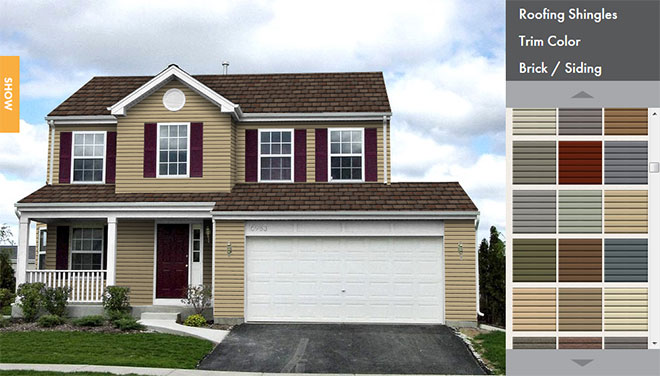TPO, EPDM Flat Roofing Installation and Repair Minneapolis MN
Minneapolis MN Commercial Flat Roofing Contractor
It is important that customers are educated on their roofing needs, as the investment in commercial flat roofing systems are significant. Here is some information from the National Roofing Contractors Association on the most common flat roofing systems for industrial & commercial buildings to help you make your decision.
Built Up Roofing – BUR
These roof systems are sometimes referred to as “tar and gravel roofs” (although we don’t use actually use tar as it’s a carcinogenic) and asphalt BUR is the most common type of flat roof at this time.
BUR roof systems generally are composed of alternating layers of bitumen and reinforcing fabrics that create a finished membrane. The number of plies in a cross section is the number of plies on a roof: The term “four plies” denotes a four ply roof membrane construction. Sometimes, a base sheet, used as the bottom most ply, is mechanically fastened. Built up roofs generally are considered to be fully adhered if applied directly to roof decks or insulation. The reinforcing fabrics also are called roofing felts or ply sheets.
The bitumen typically used in BUR roof systems is asphalt, coal tar or cold-applied adhesive. The asphalt or coal tar is heated in a kettle or tanker and then applied by mop or mechanical spreader. Asphalt is a petroleum product refined from crude oil; coal tar is derived from the distillation of coal. Cold-applied adhesives typically are solvent-based asphalts that don’t have to be heated in a kettle or tanker.
The materials used for built up roof systems include aggregate (such as gravel, slag or mineral granules), glass-fibre or mineral surfaced cap sheets, hot asphalt mopped over the entire surface, aluminum coatings or elastomeric coatings. Asphalt BUR is the most common type of flat roof at this time. It is made up of multiple layers of reinforcing plies and asphalt forming a redundancy of water proofing layers. The reflectivity of built up roofs depend on the surfacing material used. Gravel is the most common and they are referred to as asphalt and gravel roofs. Asphalt degradation, however, is a growing concern. UV-rays oxidize the surface of the asphalt and produces a chalk-like residue. As plasticizers leach out of the asphalt, asphalt built up roofs become brittle. Cracking and alligatoring follows, allowing water to penetrate the system causing blisters, cracks and leaks. Regular maintenance is required to ensure that a BUR roofing system achieves its life expectancy.
Single-Ply Membranes
Single-ply membranes are factory-manufactured sheet membranes. They generally are categorized as either thermoset (EDPM) or thermoplastic (TPO or PVC). Thermoplastic materials can be repeatedly softened when heated and hardened when cooled. Thermoset materials solidify, or “set,” irreversibly after heating. Single ply membranes commonly are referred to by their chemical acronyms, such as ethylene propylene diene monomer (EPDM).
Single-ply sheet membranes are produced using one of three manufacturing processes: calendering, extruding or spread coating. The membranes may contain reinforcement layers. Common reinforcements for single ply membranes include polyester fabrics or scrims, glass fibre, or a felt or fleece backing.
A finished sheet’s thickness typically is referred to as mil thickness. Common mil thickness for these sheet membranes range from 30 mils to 60 mils. Single-ply membranes can be installed fully adhered, mechanically attached or held down with ballast. Most single-ply roof systems do not receive surfacing. In many instances, a combination of attachment methods are used to secure a roof system.
For instance, an insulation may be mechanically attached to the substrate with the roof membrane fully adhered to the insulation.
EPDM Single-Ply Membrane
Ethylene Propylene Diene Monomer (EDPM) roofing is an efficient rubber roof style used on low-slope roofing surfaces. It is a synthetic rubber most commonly used in single-ply roofing because it is readily available and relatively simple to apply. It is also called Single Ply Membrane and it is one of the common types of low-slope roofing. It’s been in use on roofs since the 1960’s. When properly applied, it has a life cycle of 15 to 25 years. It is great for preventing leaks and is often installed for roofs that have problems with weathering, failing joints, and inflexibility. It is relatively inexpensive as well as simple to install as compared to BUR. Compared to conventional built-up roofs, it is also much cleaner and doesn’t emit the odors and fumes that are often associated with built up roofing systems. Vulcanized EPDM is the most common type of EPDM roofing system. Non-vulcanized EPDM is typically used for flashing purposes.
There are three methods of applying EPDM:
- Fully adhered EPDM uses water-based or solvent-based adhesives to adhere the EPDM rubber to the substrate.
- Mechanically fastened EPDM is attached to the substrate by manufacturer-approved mechanical methodology.
- Loose-laid membranes are secured only at the perimeters and any penetrations. A ballast of round river rock or concrete pavers is used to hold the materials in place. The river rock is usually installed at a rate of 1000 – 1200 pounds per square (100 square feet of roofing surface) and the pavers typically weigh 20-pounds per square foot. Structural integrity is of paramount importance with a loose-laid roof system. The seams are sealed using either an adhesive or a splicing tape.
EPDM Benefits:
Highly dependable, economically beneficial, high durability, and high efficiency makes EPDM an attractive option to any building owner looking to a commercial, industrial and institutional roofing contractor for a new roof or an upgrade to the existing roofing system. Additionally, an EPDM roof will often come with long warranty, low maintenance requirements, low installation labor costs, and generally garner rather easy code approvals. For regions subject to potentially catastrophic weather experiences, such as hurricanes – EPDM roofs have very high resistance, making them quite practical for those who live in those areas.
Advantages of EPDM
EPDM roofs are highly resistant to weathering, ozone, and surface damage. It is flexible in cold weather and still has high fire and heat resistance. You can’t go wrong choosing EPDM for low-slope roofs and flat roofs that need to be waterproof and durable against the harsh Minnesota weather.
TPO & PVC
Another example of a Single-Ply Membrane is the thermoplastic TPO roof system or PVC roofing system. These membranes can be repeatedly softened by heating or hardened when cooled. Because of the materials’ chemical nature, thermoplastic membranes typically are seamed by heat welding with hot air or solvent welding.
The most common thermoplastic roof membranes are PVC and TPO. The following provides general descriptions of these two systems.
Thermoplastic Olefin (TPO)
TPO membranes are produced by calendering with lamination, extrusion with lamination, or extrusion-coating techniques. TPO sheets are a blend of polypropylene and ethylene propylene polymers and usually are reinforced with polyester. TPO sheets contain colorant, flame retardants, UV absorbers and other proprietary substances to achieve desired physical properties.
- Sheet widths range from 6 feet to 12 feet wide
- Sheets are typically 40 mils to 100 mils thick
- Seams are sealed by heat welded with hot air
- TPO membranes Commonly are white or black
PVC sheets are produced by calendering, spread coating or extruding, and typically are reinforced with polyester or glass-fibre mats or scrim. PVC sheets contain plasticizers and stabilizers, as well as other additives to impart flexibility and achieve other desired physical properties. Some membranes are available with nonwoven fleece backing adhered to the underside of a sheet.
- Sheet widths range from 6 feet to 12 feet wide.
- Sheets are typically 45 mils to 90 mils thick.
- Seams are sealed by heat or chemical welding.
- PVC membranes are produced in numerous colors, though gray and white are the most common.
Modified Bitumen
Polymer-modified roof membranes are composed of reinforcing fabrics that serve as carriers for the hot polymer-modified bitumen as it is manufactured into a roll material. MB roof system membranes are composed of multiple layers, much like BUR membranes. MB roof systems typically are installed as a two-ply system and almost always are fully adhered.
There are two types of MB roofing membranes:
- SBS polymer-modified bitumen membranes commonly are installed in hot moppings of asphalt (similar to BUR systems) or cold adhesive. Some SBS modified membranes are self adhering; that is, they contain an adhesive backing.
- APP polymer-modified bitumen membranes typically are heat-welded or torch-applied.
Generally, APP modifiers impart a “plasticized” quality to asphalt, and SBS modifiers impart a “rubberized” quality to asphalt. MB membranes and EPDM a thermoset membrane, often are confused by consumers because of colloquialisms used by roofing contractors. MB and EPDM membranes are sometimes called “rubber roofs.”
Modified Bitumen
Surfacings for MB membranes include aggregate surfacing, mineral surfacing, metal foil-laminate surfacing and smooth liquid-applied surfacing.
Look for a roofing contractor that specializes in different types of roofing, and can help you to decide which will work best for your building – residential or commercial.
When Experience Matters
Each commercial roofing system has its own performance characteristics and distinct advantages. If you are planning to install a flat roof for your building, the best thing that you can do is to contact a Minneapolis MN Commercial Flat Roofing Contractor that has extensive experience working with commercial roofing systems.
While roofing materials knowledge is of utmost importance, selecting the right commercial roofing system is only half of what contributes to the success of a roofing project. The most important part to consider is that each roofing system is only as good as the commercial roofer who installs the roof. Proper installation is essential to fully maximize the benefits of the roof system and your capital investment. It is the flashing and detail work that relies upon craftsmanship that is critical to the success of your roof. You can have the very best materials utilized on your roof; however, installation by an average commercial roofer will result in average roof system performance. If you expect superior commercial roofing systems performance, select only an experienced Minneapolis MN Commercial Flat Roofing Contractor.





 Click Here
Click Here Click Here To Use
Click Here To Use
Request an estimate for roof repair. Between 7:30 – 4:00 I can be reached at 651-602-7900. Thank you. Address is 3326 Girard Avenue North, Minneapolis, MN